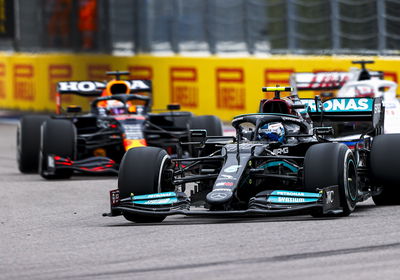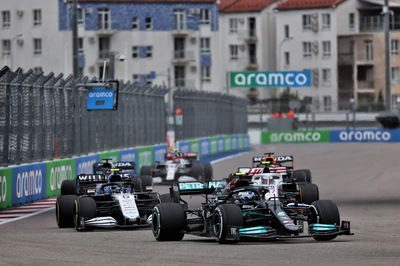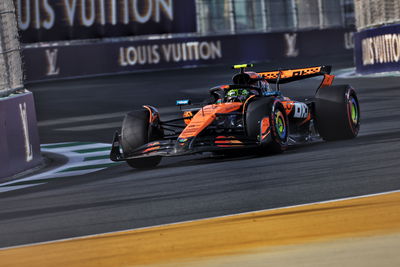Why Bottas failed to replicate Monza F1 charge in Sochi

Bottas started 16th in Sochi after Mercedes was forced to change his power unit for the second race running.
The team was confident that Bottas would have been able to fight his way through the pack, similar to his recovery drive at the Italian Grand Prix when he went from the back to third.
But the Finn struggled to make the same kind of progress and was languishing outside of the top 10 before late heavy rain “saved” his race as he switched onto intermediate tyres early and vaulted up to fifth.
“It was lot more difficult for me than I thought it would be, just to come through the field,” Bottas said.
“I thought it was going to be like in Monza, but it was a lot more difficult. Mainly what I struggled with was big understeer, and this was when I got close and I couldn't get to overtaking distance.”
Despite starting four places behind Bottas in 20th, Red Bull’s Max Verstappen made short work of progressing through the pack and had managed to get past Bottas with relative ease just six laps into the race.
Bottas’ failure to make life more difficult for Verstappen - who is teammate Lewis Hamilton’s main championship rival - drew criticism from 1996 world champion Damon Hill.

Asked if he could have done more to halt Verstappen’s charge, Bottas replied: “He was just able to really come through the field.
“I need to have a look if there was more I could have done but I think he passed me pretty easily. I think he then overtook the cars ahead of me, and I had no chance.”
Mercedes trackside engineering director Andrew Shovlin said that Bottas’ struggles with understeer were exacerbated by the cooler temperatures on Sunday.
“Principally that the cooler conditions the front tyres were having a tough time,” Shovlin explained.
“We were understeering a bit. Whereas on Friday, the rears were really the axle that was suffering the most, here it was the front.
“And when you can't follow in those last four corners, then you can't get close enough to overtake, but it was really down to car balance.
“I think the cooler conditions are actually making it more difficult, rather than easier.”
Another factor that hampered Bottas was that he repeatedly found himself getting caught up in a train of cars all running within DRS range of each other.

Despite Bottas often boasting superior pace over his rivals directly ahead, he was unable to overtake because they were also benefitting from the additional speed boost, effectively negating any advantage the Mercedes driver may have had.
“This race was harder and the reason it was harder is because what we were seeing with DRS trains,” Mercedes technical director Mike Elliott said.
"As a consequence of that, even though Valtteri has got more pace the car in front also has that same advantage of DRS and it makes it much more difficult to overtake.
“We saw that up and down the grid with people stuck in those positions, unable to get past because of those trains.
"On top of that Valtteri, was also struggling with an amount of understeer in the car. And because of that he was struggling in sector 3 primarily.
“What that leads to is that leads to a position where it is very difficult to get close to the car in front and as a consequence of that, when you get onto the straight you don’t get the full benefit of the tow because you are just too far behind.
“By the time you are really sort of catching up you are already too close to the end of the straight to make that pass.”











